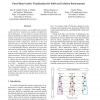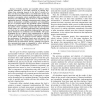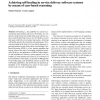2015 search results - page 41 / 403 » Hidden Software Capabilities |
ATAL
2006
Springer
14 years 24 days ago
2006
Springer
Intelligent software personal assistants for human organizations are an active research area within the multiagent community. However, while many capabilities for these software p...
IWPC
2002
IEEE
14 years 2 months ago
2002
IEEE
During software evolution, several different facets of the system need to be related to one another at multiple levbstraction. Current software evolution tools have limited capabi...
ICRA
2007
IEEE
14 years 3 months ago
2007
IEEE
— Portable, modular and extensible software allows robotics researchers to pool their resources by sharing algorithms, thus advancing research in the field of robotics at a fast...
APIN
2008
13 years 9 months ago
2008
Abstract Self-healing, i.e. the capability of a system to autonomously detect failures and recover from them, is a very attractive property that may enable large-scale software sys...
CISIS
2010
IEEE
2010
IEEE
Computational Grid as an Appropriate Infrastructure for Ultra Large Scale Software Intensive Systems
14 years 4 months ago
—Ultra large scale (ULS) systems are future software intensive systems that have billions of lines of code, composed of heterogeneous, changing, inconsistent and independent elem...



